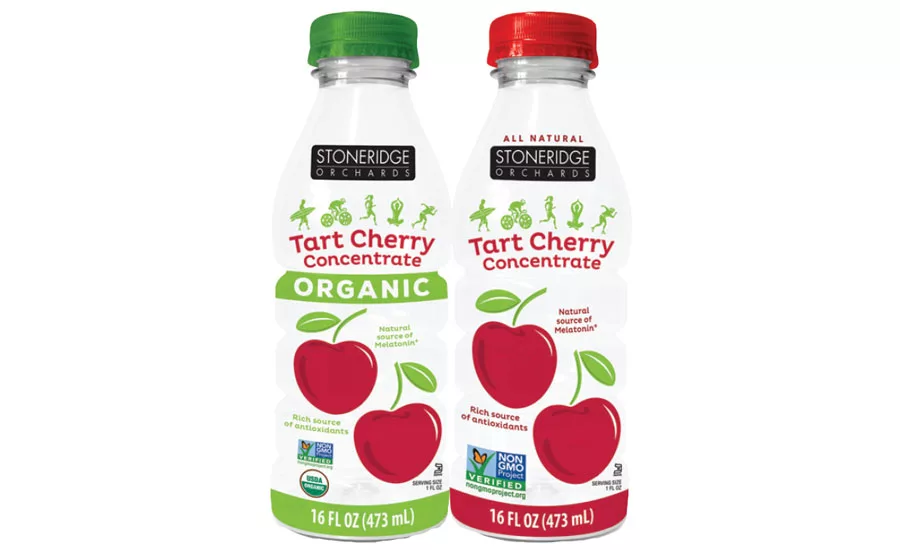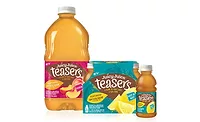2018 State of the Beverage Industry: Juice, juice drinks market play up health benefits
Premium juices, lemonades bright spot for declining category

As consumers turn to products with less sugar, some traditional beverage categories have seen the effects. That trend along with the rapid growth of bottled water and the popularity of energy drinks are impacting the $16.6 billion juice sector, which experienced a year of declines as dollar sales fell 7.5 percent and units slipped 12 percent, stated Susan Viamari, vice president for Thought Leadership at Chicago-based Information Resources Inc. (IRI), in January’s Beverage Industry issue
Dollar sales for refrigerated orange juices contracted 5 percent to more than $2.8 billion in U.S. supermarkets, drug stores, mass merchandisers, gas and convenience stores, military commissaries, and select club and dollar retail chains for the 52 weeks ending May 20, IRI data indicates.
As a whole, aseptic juices and refrigerated juice and juice drink smoothies contracted 6.2 percent and 6.1 percent, respectively, while juice drink concentrates experienced a deceleration of 4.6 percent for comparable period, according to IRI data.
“Juice and juice drinks have experienced mostly lackluster performance in recent years, impacted by a variety of factors including high calories and sugar content, comparatively high prices and limited innovation,” said Gary Hemphill, managing director of research at New York-based Beverage Marketing Corporation (BMC), in Beverage Industry’s January issue. “Orange juice and grapefruit juice have struggled to grow in recent years. Orange especially is connected to morning consumption. With fewer people taking the time to have breakfast at home, sales have suffered.”
(Individual brands)
| Dollar Sales | % CHANGE VS. PRIOR YEAR | MARKET SHARE | % CHANGE VS. PRIOR YEAR | |
| Vita Coco | $198,696,192 | -2.3 | 39.5 | 1.6 |
| Juicy Juice | $58,687,692 | -5.3 | 11.7 | 0.1 |
| Apple & Eve | $45,793,480 | -8.3 | 9.1 | -0.2 |
| Minute Maid | $34,990,912 | -14.9 | 7.0 | -0.7 |
| Capri Sun | $28,547,322 | -14.6 | 5.7 | -0.6 |
| Category total* | $503,136,192 | -6.2 | 100.0 | — |
Source: Information Resources Inc. (IRI), Chicago. Total U.S. supermarkets, drug stores, gas and convenience stores, mass merchandisers, military commissaries, and select club and dollar retail chains for the 52 weeks ending May 20.
Due to concerns about the high sugar content of juices, per capita consumption fell from 47 liters in 2002 to 33 liters in 2016, according to Chicago-based Euromonitor International’s February 2017 report titled “Juice in the US.”
In its May 2017 report “Juice and Juice Drinks – US,” Chicago-based Mintel also points to flattened sales for the category and segments. “Total sales of juice, juice drinks and smoothies reached an estimated $19.8 billion in 2016; compared to 2011, the total juice market grew by less than 3 percent,” the report states.
Despite the fact that 78 percent of consumers have purchased 100 percent juice in the past three months, 100 percent juice continues to experience year-on-year sales declines, it adds.
(Individual brands)
| Dollar Sales | % CHANGE VS. PRIOR YEAR | MARKET SHARE | % CHANGE VS. PRIOR YEAR | |
| Naked Juice | $545,571,328 | -3.4 | 64.7 | 1.3 |
| Bolthouse Farms | $175,669,152 | -12.5 | 20.8 | -0.1 |
| Naked Juice Protein Zone | $34,350,968 | -9.9 | 4.1 | -0.5 |
| Odwalla | $20,110,306 | -12.4 | 2.4 | -0.4 |
| Suja Essentials | $18,848,144 | 51.8 | 2.2 | -0.2 |
| Category total* | $842,600,768 | -6.1 | 100.0 | — |
Source: Information Resources Inc. (IRI), Chicago. Total U.S. supermarkets, drug stores, gas and convenience stores, mass merchandisers, military commissaries, and select club and dollar retail chains for the 52 weeks ending May 20.
“As noted in ‘Juice and Juice Drinks – US,’ October 2016, 100 percent juice may be pigeonholed as just a breakfast beverage. Additionally, juice drinks may deliver more flavor and excitement, meaning consumers may choose juice drinks over 100 percent juice,” the report states. “… Changes to nutritional labels may work in favor of 100 percent juice, but the segment faces a difficult uphill battle to increase sales.”
Although the juice and juice drinks market has experienced losses in consumer penetration, the declines have begun to flatten out, noted Kevin Weissheier, consumer insights executive at New York-based Kantar Worldpanel, in Beverage Industry’s January issue.
“[O]ver the past year, consumers have increased their education around fruit-based beverages and are more willing to look past the higher calories for the nutritional benefits that come from them,” Weissheier explained. “While orange juice has been in a rather steady decline, there has been a notable increase in lemonade consumption. Consumers are turning to lemonade, referencing its cleansing and purifying properties (some of which are ‘Yogi Community’-driven) as an alternative to typical consumption.
(Individual brands)
| Dollar Sales | % CHANGE VS. PRIOR YEAR | MARKET SHARE | % CHANGE VS. PRIOR YEAR | |
| Tropicana Pure Premium | $897,871,360 | -2.9 | 31.3 | 31.3 |
| Simply Orange | $655,924,864 | -10.9 | 22.8 | 22.8 |
| Private label | $528,584,704 | 2.2 | 18.4 | 18.4 |
| Florida's Natural | $285,666,144 | -4.9 | 9.9 | 9.9 |
| Minute Maid Premium | $188,778,080 | -0.7 | 6.6 | 6.57 |
| Category total* | $2,871,738,624 | -5.0 | 100.0 | — |
Source: Information Resources Inc. (IRI), Chicago. Total U.S. supermarkets, drug stores, gas and convenience stores, mass merchandisers, military commissaries, and select club and dollar retail chains for the 52 weeks ending May 20.
“In addition to lemonade/lemon (which is more fruit drink-focused), cran blends, coconut water and grapefruit have grown their share,” he continued. “These three options fit into America’s growing desire for ‘functional health’ — whether it is in the form of internal purity, hydration or cleansing.”
Jordan Rost, vice president of consumer insights at New York-based Nielsen, also notes the “pockets of opportunity” within the fruit drinks’ aisle.
“Despite an overall declining category, shelf-stable pineapple and tropical fruit drinks saw dollar sales growth in the latest 52-week period, [ended] Oct. 28, 2017, up 19 percent and 7.5 percent, respectively,” he said in the January issue of Beverage Industry.
Looking ahead, Mintel’s report forecasts the juice market will reach $20.8 billion in sales by 2021; however, this will reflect a decrease of 7 percent from the 2016 to 2021 time period. BI
Looking for a reprint of this article?
From high-res PDFs to custom plaques, order your copy today!




